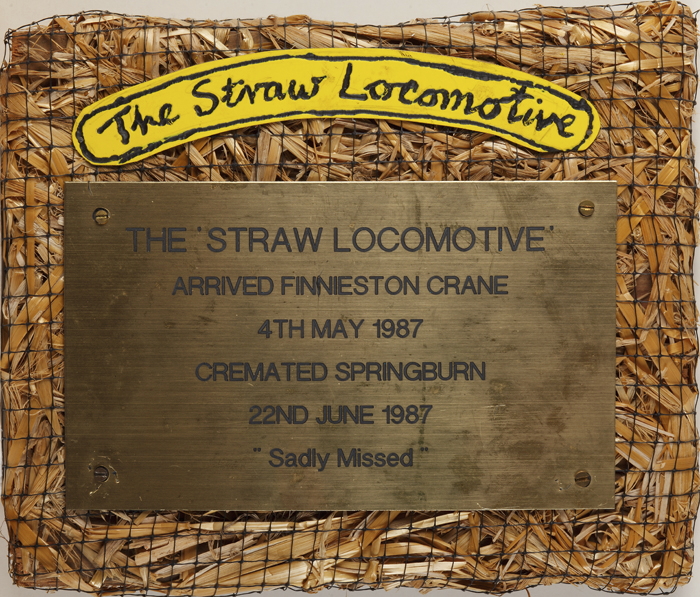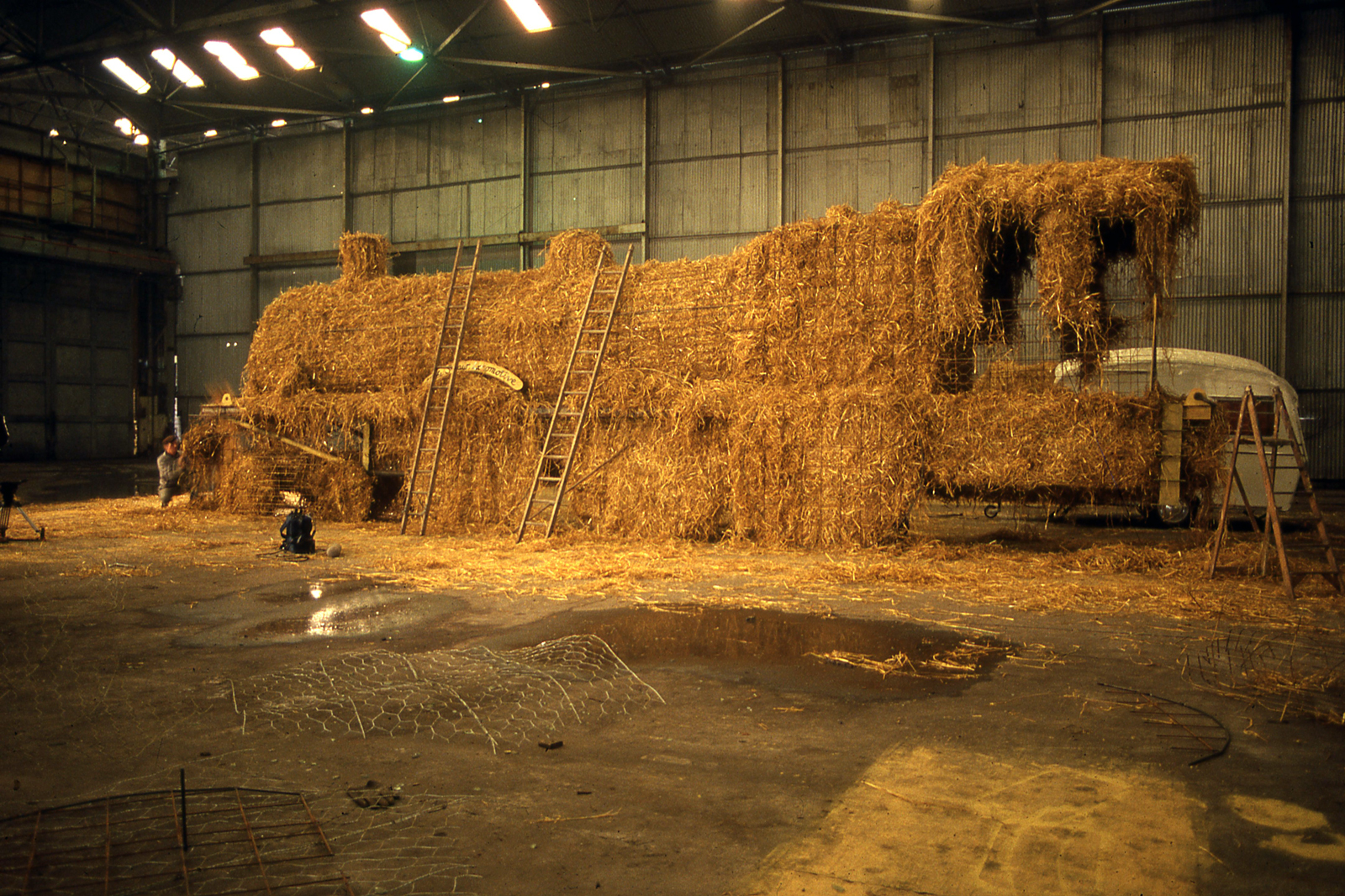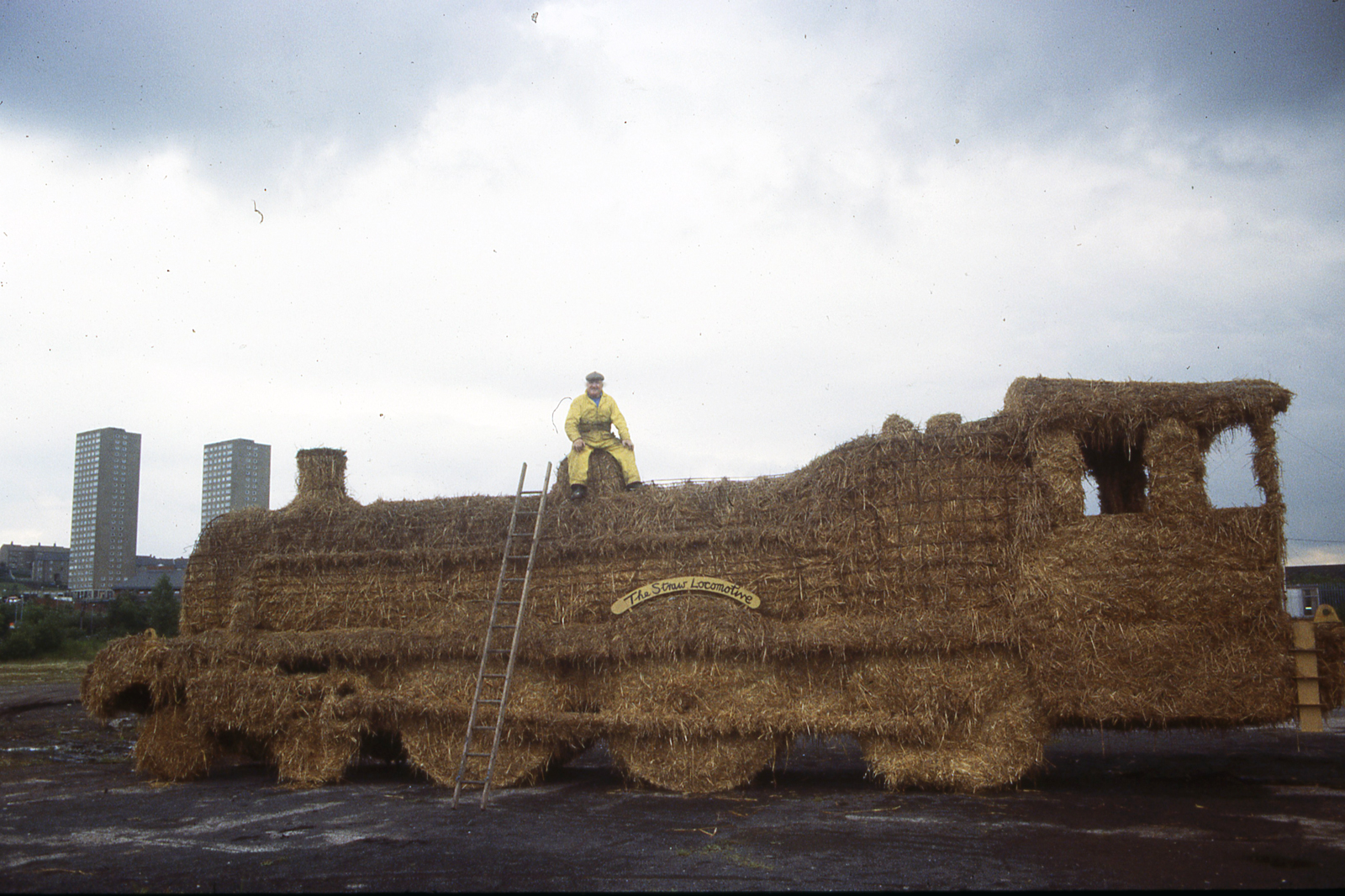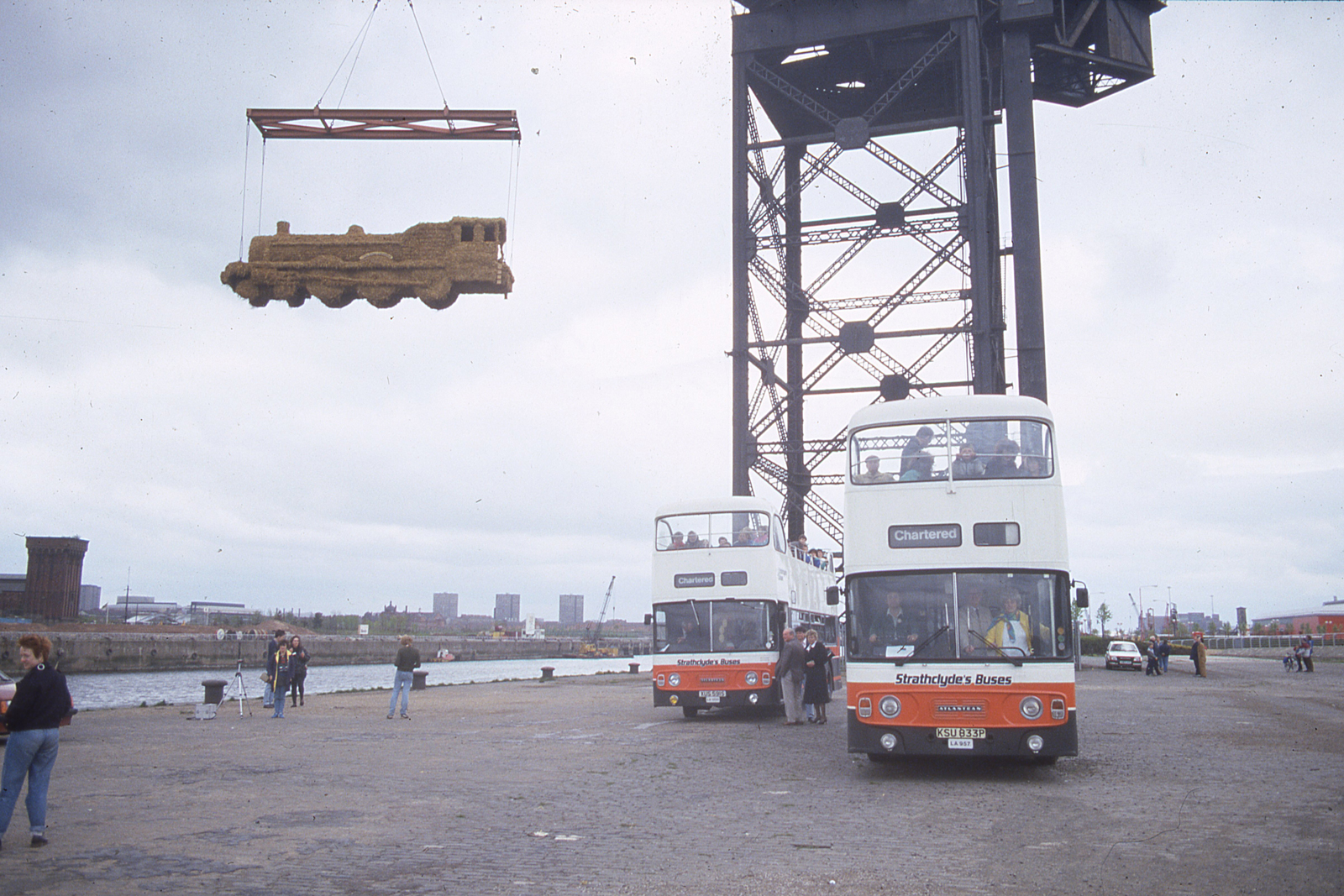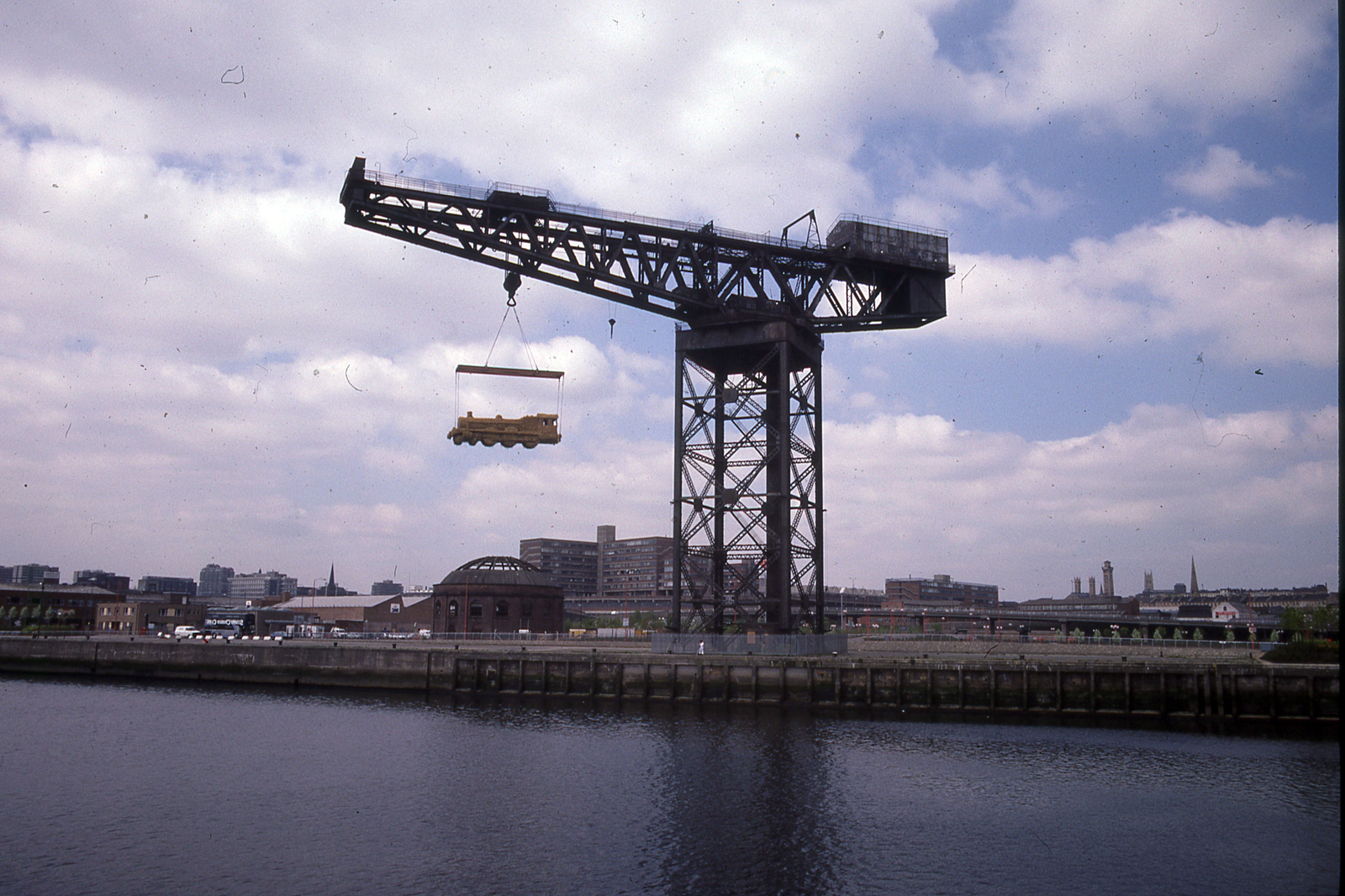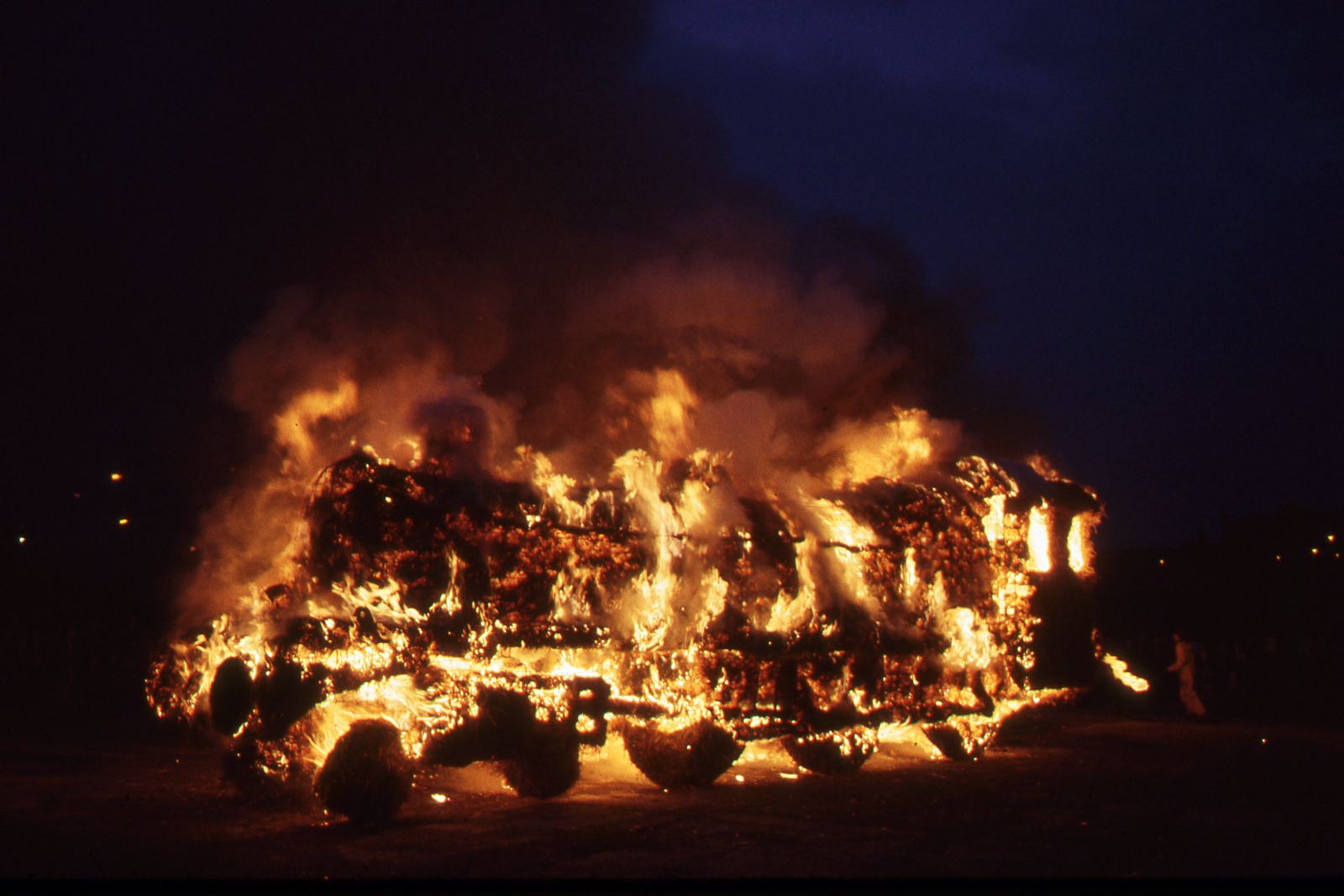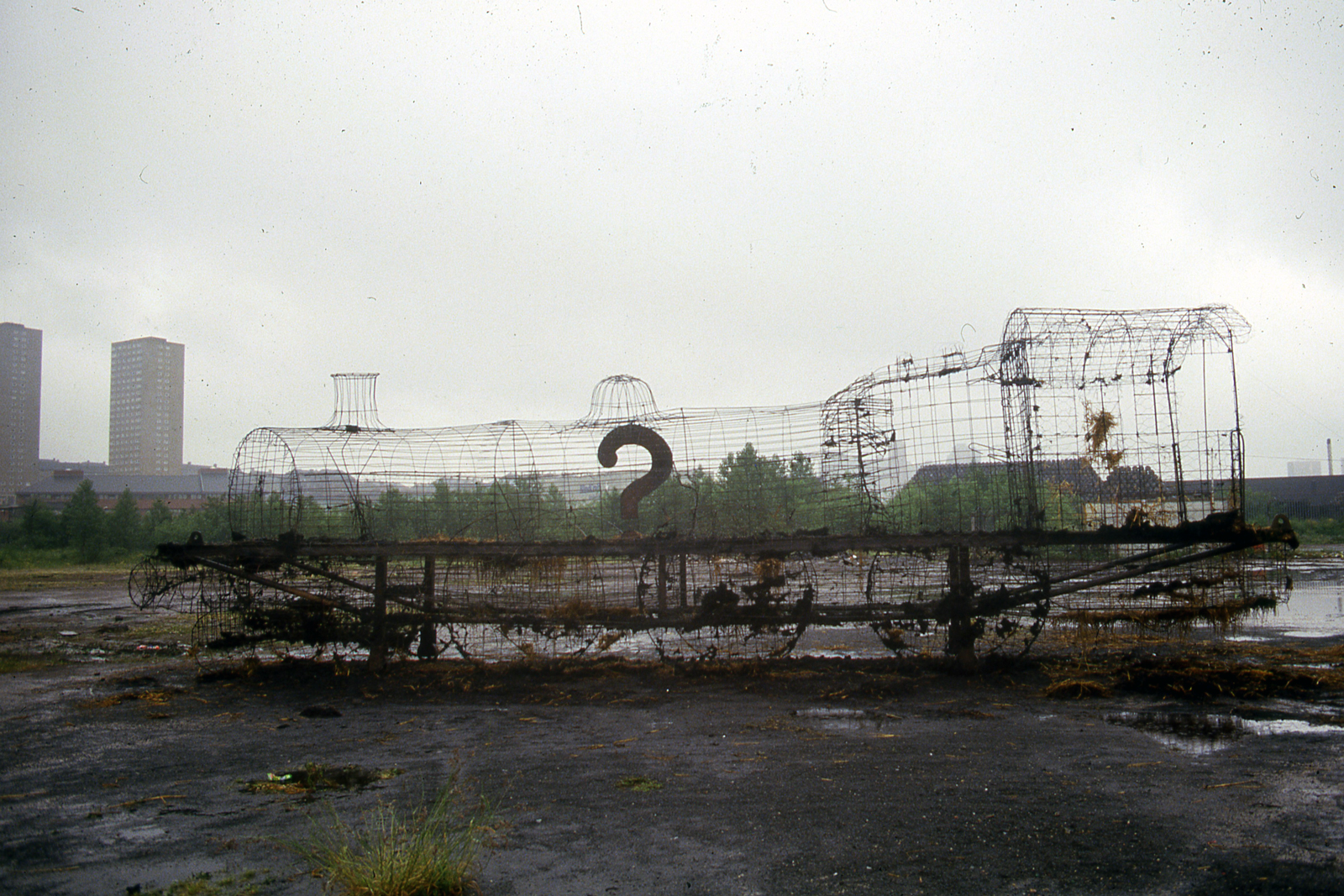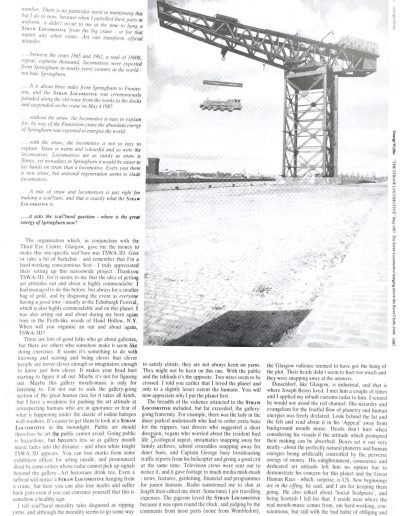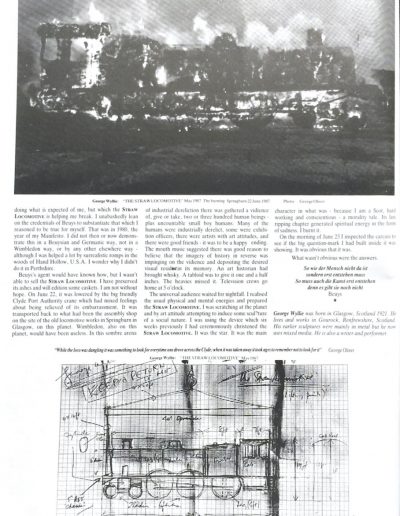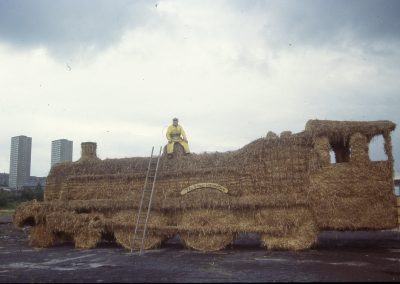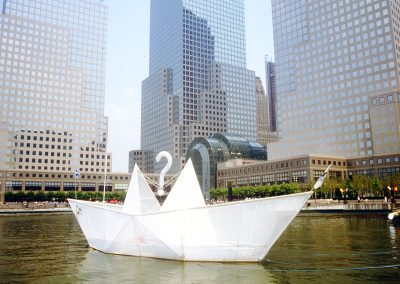
Date: May – June 1987
Location: Glasgow
Type: sculpture, installation, performance
Technique: hand-built
Material: RSJ steel girder, steel mesh frame, 2.5 tonnes long length golden feeding straw, steel question mark.
Length: 12200 cm
Height: 400 cm
Width: 220 cm
Weight: 6 tonne
The Straw Locomotive
Commissioned in 1987 by TSWA-3D, The Straw Locomotive was the first of Wyllie’s ambitious public works combining sculpture and performance.
Wyllie’s life-sized sculpture, made from wire mesh and straw, made a bold statement about the decline of Glasgow’s once-thriving heavy industry.
Glasgow has shipped an incredible 18,000 locomotives to 43 countries over time, with some of the biggest and most potent steam engines produced at Springburn. In the 1950s, it was common for engines to be transported through the city to Stobcross Quay for international shipping.
Wylie’s sculpture was suspended using the crane that loaded the North British Locomotives onto ships bound for international destinations.
The Straw Locomotive waited for six weeks, suspended, in anticipation of a ship that never came.
The sculpture had a strong effect on those who witnessed it, especially those who held memories of the original locomotives.
The Straw Locomotive was lowered then transported on a low-loader through the streets of Glasgow to the former site of the North British Locomotive Works. The Viking-inspired ceremony saw The Straw Locomotive set ablaze, accompanied by the haunting sound of bagpipes. The charred remains revealed a Question Mark.
In The Straw Locomotive, it seems to me, George Wyllie has come nearest to resolving the essential dichotomy of his creative urge. One of those selected in 1987 TSWA-3D competition for major site-specific artworks, George Wyllie conceived a full-scale, skeletal locomotive of heavy steel wire, filled it with straw and arranged to have it suspended from the massive hammer-head crane at Finnieston on the north bank of the Clyde in Glasgow, the very crane that had traditional been used to load the great North British locomotives into the ships that would take them all over the world.
A popular landmark, The Straw Locomotive remained on view for the weeks of Mayfest and into the summer, with grass seeding itself and birds nesting in its fabric. Thereafter, it was taken down (Wyllie rescuing the birds) placed a low-loader and driven through the streets of Glasgow (as the real railway locomotives used to be) back to Springburn where it was ceremoniously set alight on the wasteland where the North British Locomotive Works once stood. When the flames eventually died down, a large question mark revealed itself amid the flowing cinders. It was an exciting event for the crown who watched it: Glasgow’s version of Up Hellya, the traditional burning of the Viking longboat. Yet the event had its tragic side: Wyllie’s intention had been to question the reasons for Glasgow’s decline as a great manufacturing centre, not just in Scottish but in world terms.
CORDELIA OLIVER
